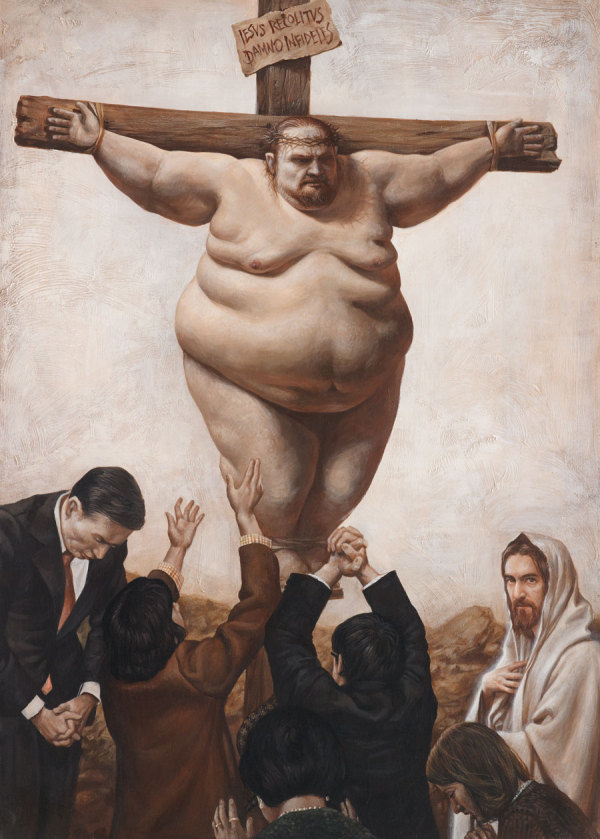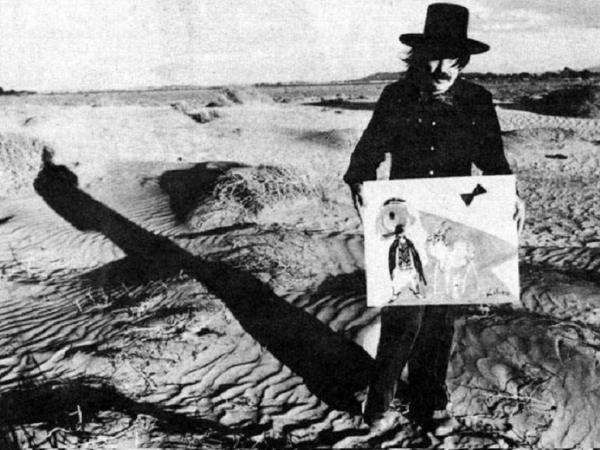Artwork by JW-JEONG
FRESH AIR
The words “under God” in the Pledge of Allegiance and the phrase “In God we trust” on the back of a dollar bill haven’t been there as long as most Americans might think. Those references were inserted in the 1950s during the Eisenhower administration, the same decade that the National Prayer Breakfast was launched, according to writer Kevin Kruse. His new 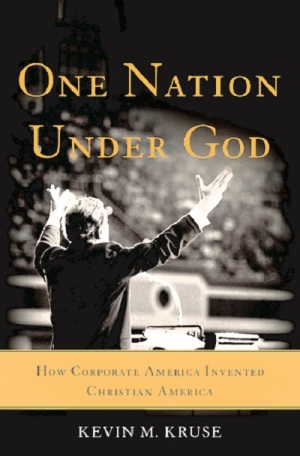 book is One Nation Under God. In the original Pledge of Allegiance, Francis Bellamy made no mention of God, Kruse says. Bellamy was Christian socialist, a Baptist who believed in the separation of church and state. “As this new religious revival is sweeping the country and taking on new political tones, the phrase ‘one nation under God’ seizes the national imagination,” Kruse tells Fresh Air‘s Terry Gross. “It starts with a proposal by the Knights of Columbus, the Catholic lay organization, to add the phrase ‘under God’ to the Pledge of Allegiance. Their initial campaign doesn’t go anywhere but once Eisenhower’s own pastor endorses it … it catches fire.” Kruse’s book investigates how the idea of America as a Christian nation was promoted in the 1930s and ’40s when industrialists and business lobbies, chafing against the government regulations of the New Deal, recruited and funded conservative clergy to preach faith, freedom and free enterprise. He says this conflation of Christianity and capitalism moved to center stage in the ’50s under Eisenhower’s watch. “According to the conventional narrative, the Soviet Union discovered the bomb and the United States rediscovered God,” Kruse says. “In order to push back against the atheistic communism of the Soviet Union, Americans re-embraced a religious identity. That plays a small role here, but … there’s actually a longer arc. That Cold War consensus actually helps to paper over a couple decades of internal political struggles in the United States. If you look at the architects of this language … the state power that they’re worried most about is not the Soviet regime in Moscow, but rather the New Deal and Fair Deal administrations in Washington, D.C.”
book is One Nation Under God. In the original Pledge of Allegiance, Francis Bellamy made no mention of God, Kruse says. Bellamy was Christian socialist, a Baptist who believed in the separation of church and state. “As this new religious revival is sweeping the country and taking on new political tones, the phrase ‘one nation under God’ seizes the national imagination,” Kruse tells Fresh Air‘s Terry Gross. “It starts with a proposal by the Knights of Columbus, the Catholic lay organization, to add the phrase ‘under God’ to the Pledge of Allegiance. Their initial campaign doesn’t go anywhere but once Eisenhower’s own pastor endorses it … it catches fire.” Kruse’s book investigates how the idea of America as a Christian nation was promoted in the 1930s and ’40s when industrialists and business lobbies, chafing against the government regulations of the New Deal, recruited and funded conservative clergy to preach faith, freedom and free enterprise. He says this conflation of Christianity and capitalism moved to center stage in the ’50s under Eisenhower’s watch. “According to the conventional narrative, the Soviet Union discovered the bomb and the United States rediscovered God,” Kruse says. “In order to push back against the atheistic communism of the Soviet Union, Americans re-embraced a religious identity. That plays a small role here, but … there’s actually a longer arc. That Cold War consensus actually helps to paper over a couple decades of internal political struggles in the United States. If you look at the architects of this language … the state power that they’re worried most about is not the Soviet regime in Moscow, but rather the New Deal and Fair Deal administrations in Washington, D.C.”
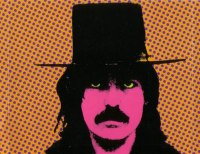 RELATED:
RELATED: ![]() In 1970, Warner Bros. Records had an unusual philosophy: they’d sign artists and, instead of wanting a hit single immediately, they’d develop them over several albums. This way, James Taylor, Joni Mitchell, Little Feat, and Randy Newman got big career boosts. They also took a chance on Captain Beefheart, and although neither a hit single nor a hit album resulted, some very interesting music did. Fresh Air rock historian Ed Ward has the story. MORE
In 1970, Warner Bros. Records had an unusual philosophy: they’d sign artists and, instead of wanting a hit single immediately, they’d develop them over several albums. This way, James Taylor, Joni Mitchell, Little Feat, and Randy Newman got big career boosts. They also took a chance on Captain Beefheart, and although neither a hit single nor a hit album resulted, some very interesting music did. Fresh Air rock historian Ed Ward has the story. MORE
LESTER BANGS: Don Van Vliet is a 39-year-old man who lives with his wife Jan in a trailer in the Mojave Desert. They have very little money, so it must be pretty hard on them sometimes, but I’ve never heard them complain. Don Van Vliet is better known as Captain Beefheart, a legend worldwide whom the better part of a generation of New Wave rock ‘n’ roll bands’ have cited as one of their most important spiritual and musical forefathers: John Lydon/Rotten, Joe Strummer of the Clash, Devo, Pere Ubu, and many others have attested to growing up on copies of Van Vliet’s 1969 album Trout Mask Replica, playing its four sides of discordant yet juicy swampbrine jambalaya roogalator over and over again until they knew whole bits – routines out of his lyrics, which are a wild and totally original form of free-associational poetry. There are some of us who think he is one of the giants of 20th century music, certainly of the postwar era. MORE
JOHN PEEL’S CAPTAIN BEEFHEART DOCUMENTARY
LA WEEKLY: Top 14 Reasons’s Captain Beefheart Was A True American Genius
ROCK SNOB ENCYCLOPEDIA: CAPTAIN BEEFHEART: Blues-braying Tasmanian Devil, industrial-strength surrealist, poet, painter, visionary, charlatan. Of all the people waving the freak flag in the ’60s, Captain Beefheart and the revolving-door personnel of his Magic Band waved it the highest and the weirdest. Stirring together the primal, blacksnake moan of Delta trance-blues and the free-jazz headfuck of John Coltrane and Charles Mingus in the burbling psychedelic cauldron of West Coast pop experimentalism of the mid-’60s, Beefheart’s music was the stuff of spells and incantations, fire-walking and levitation. The title alone of “Making Love to a Vampire With a Monkey on My Knee” gives you an idea of the kind of evil hoodoo these cats conjured.
Riding on the wave of post-acid weirdness that was turning pop music on its ear in those days, Beefheart (his mother knew him as Don Van Vliet) and his Magic Band swept into Los 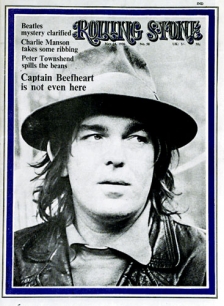 Angeles, hard and mean from years on the bar band/car club circuit. Channeling the muddy Mississippi growl of Howlin’ Wolf, Beefheart was in full possession of a shiver-inducing lupine howl second only to “Baby Please Don’t Go”-period Van Morrison. Early on a fairly straight-up Nuggets-style garage-punk outfit that snared a regional hit with a cover of Bo Diddley’s “Diddy Wah Diddy” in 1966, the Magic Band quickly morphed into something much more feral and fractured.
Angeles, hard and mean from years on the bar band/car club circuit. Channeling the muddy Mississippi growl of Howlin’ Wolf, Beefheart was in full possession of a shiver-inducing lupine howl second only to “Baby Please Don’t Go”-period Van Morrison. Early on a fairly straight-up Nuggets-style garage-punk outfit that snared a regional hit with a cover of Bo Diddley’s “Diddy Wah Diddy” in 1966, the Magic Band quickly morphed into something much more feral and fractured.
1967’s Safe as Milk remains the ideal starting point for Beefheart beginners, with all the trademarks of his sound pitched in perfect tandem: proto-garage snarl, menacing blues, Martian poetry, exotic rhythms and extra-terrestrial sound effects. Thirty-four years later, it remains an eminently lickable psych lollipop. Purists point to Trout Mask Replica as the pinnacle of the Captain’s canon, though only a small percentage of those who sing its praises actually listen to it for pleasure. Harsh, cryptic and moving sideways, backward and upside down all at once, Trout Mask’s free-jazz-skronk-as-interpreted-by-rock-instruments remains a forbidding totem of post-hippie hieroglyphics. Those who manage to break its code are granted entry to a secret society of blissed-out noiseniks where, legend has it, they are privy to all manner of esoteric know-ledge (the ability to fly or make yourself disappear completely, that kind of thing).
Like nearly every artist deemed worthy of rock-snob adulation, the Captain would sell few records in his time, but his influence would reverberate loudly through the course of post-’60s rock history: the corrosive blare of punk, the affected weirdness of New Wave and just about every noisy, art-damaged indie rock outfit of note in the last 30 years. In 1982, having released 12 albums in the course of 22 years, Beefheart retired from music altogether, turned his creative energies to oil painting and disappeared into a desert hermitage in the Mojave. While his canvasses fetched top dollar on the art market, he remained a walking question mark. Refusing all requests for interviews, Beefheart managed to keep the facts of his daily existence hermetically sealed from fans and media alike for going on 20 years. Though rumored to be suffering some mysterious ailment that left him wasted and near death, Beefheart did communicate regularly with one person from the outside world: PJ Harvey. The good Captain passed away on December 17th 2010. — JONATHAN VALANIA MORE

